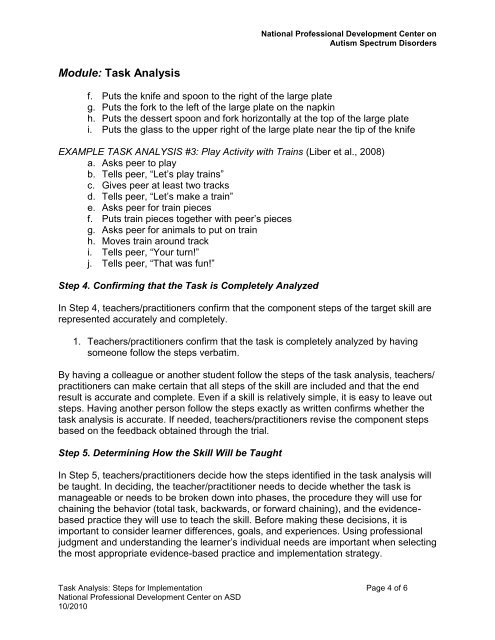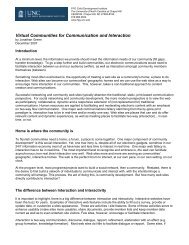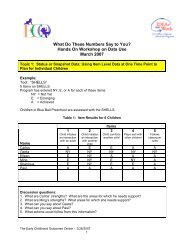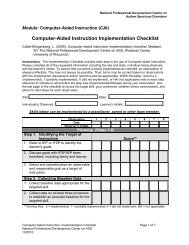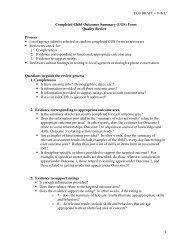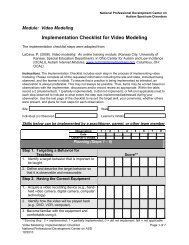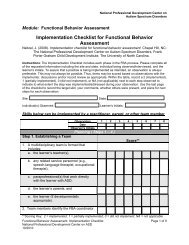Task Analysis: Steps for Implementation - National Professional ...
Task Analysis: Steps for Implementation - National Professional ...
Task Analysis: Steps for Implementation - National Professional ...
You also want an ePaper? Increase the reach of your titles
YUMPU automatically turns print PDFs into web optimized ePapers that Google loves.
<strong>National</strong> <strong>Professional</strong> Development Center onAutism Spectrum DisordersModule: <strong>Task</strong> <strong>Analysis</strong>f. Puts the knife and spoon to the right of the large plateg. Puts the <strong>for</strong>k to the left of the large plate on the napkinh. Puts the dessert spoon and <strong>for</strong>k horizontally at the top of the large platei. Puts the glass to the upper right of the large plate near the tip of the knifeEXAMPLE TASK ANALYSIS #3: Play Activity with Trains (Liber et al., 2008)a. Asks peer to playb. Tells peer, “Let’s play trains”c. Gives peer at least two tracksd. Tells peer, “Let’s make a train”e. Asks peer <strong>for</strong> train piecesf. Puts train pieces together with peer’s piecesg. Asks peer <strong>for</strong> animals to put on trainh. Moves train around tracki. Tells peer, “Your turn!”j. Tells peer, “That was fun!”Step 4. Confirming that the <strong>Task</strong> is Completely AnalyzedIn Step 4, teachers/practitioners confirm that the component steps of the target skill arerepresented accurately and completely.1. Teachers/practitioners confirm that the task is completely analyzed by havingsomeone follow the steps verbatim.By having a colleague or another student follow the steps of the task analysis, teachers/practitioners can make certain that all steps of the skill are included and that the endresult is accurate and complete. Even if a skill is relatively simple, it is easy to leave outsteps. Having another person follow the steps exactly as written confirms whether thetask analysis is accurate. If needed, teachers/practitioners revise the component stepsbased on the feedback obtained through the trial.Step 5. Determining How the Skill Will be TaughtIn Step 5, teachers/practitioners decide how the steps identified in the task analysis willbe taught. In deciding, the teacher/practitioner needs to decide whether the task ismanageable or needs to be broken down into phases, the procedure they will use <strong>for</strong>chaining the behavior (total task, backwards, or <strong>for</strong>ward chaining), and the evidencebasedpractice they will use to teach the skill. Be<strong>for</strong>e making these decisions, it isimportant to consider learner differences, goals, and experiences. Using professionaljudgment and understanding the learner’s individual needs are important when selectingthe most appropriate evidence-based practice and implementation strategy.<strong>Task</strong> <strong>Analysis</strong>: <strong>Steps</strong> <strong>for</strong> <strong>Implementation</strong> Page 4 of 6<strong>National</strong> <strong>Professional</strong> Development Center on ASD10/2010


